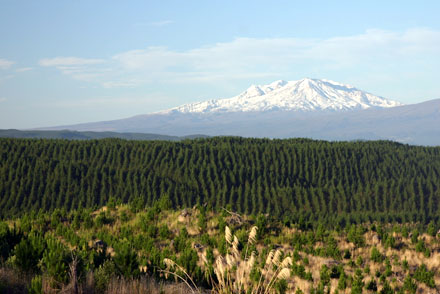
Owners of forestry blocks more than a hectare in size might soon be up for thousands of dollars in extra costs to harvest their trees. New Zealand’s introduction of new National Environment Standards for plantation forestry has altered how councils monitor forestry-based activities, and their impact on the environment. Source: Radio New Zealand
Tasman mayor Richard Kempthorne says the council is among others around the country now responsible for monitoring permitted activities that address forestry related earthworks, (stream) crossings, quarrying and harvesting.
It is currently consulting the public on its own tailored proposal, which includes charges of NZ$650 per inspection before, during and after each harvest, and NZ$120 for each test of stream water.
The new standard applies to forest blocks of more than one hectare, and allows councils to charge once it has fixed fees.
Mr Kempthorne said the council would have to hire more staff to carry out increased levels of monitoring, and the aim was to shift more of the cost from ratepayers to forestry owners.
The council’s consultation paper said that given the obligation on the council to observe and enforce the new standard, and the fact that the regulations themselves provide for the council to recover some of the costs incurred, fees will offset some added costs of monitoring forestry activities.
“It is appropriate that some of the costs it incurs are, where possible, charged to the individual/company undertaking the activities rather than all of the cost being apportioned to the general ratepayer,” the document said.
The proposal is for a flat inspection fee per site visit that includes assessing proposed work as per plans, confirming compliance and providing written reports.
The owner of a small forestry block in north Nelson said further compliance costs would make small holdings unviable.
Barry Bird said his 300 trees would now be good for only firewood, if someone wanted to mill them. His problem is compounded by encroaching urban growth now hindering access to the site.
“The trees are all pruned and look good, but essentially now they’re just free to anyone who wants them for firewood.”
Mr Bird says compliance costs are the same whether you have 10 trees, or 10,000 trees.
“If you’ve got 1000 hectares of forestry and you get a forestry company in to harvest them – it’s a totally different ball game.
“If you’re only a small holder of pine trees – if you haven’t got anything over 50 hectares then you’re just nuisance value. And if we’re going to get these extra compliance costs I’ll just chop the whole bloody lot down and say, ‘come and get free firewood’,” Mr Bird said.
He said it could cost an owner the access to a site.
“You could spend tens of thousands of dollars on creating access to a site – I mean the trees just simply aren’t worth it. On a spreadsheet, you’d just be completely down the plughole.”
Richard Kempthorne said it could mean a couple of thousand dollars more to the cost of harvesting for owners of small blocks. He said depending on how well it had been planted, and the level of potential impact on the environment, could mean costs were less.
Consultation on the Tasman District proposal opened in December and closes in February.







